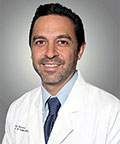- Home
- Foot & Ankle Conditions
- Pediatric Conditions
- Growth Plate Fractures
Growth Plate Injuries: Causes, Symptoms, & Treatment Options
- Published 6/1/2018
- Last Reviewed 12/14/2023

What are Growth Plates?
Growth plates, also known as epiphyseal plates, are soft points on the end of a child's bone that form solid bone as your child matures. Growing bones each have one growth plate at either end.
A suspected injury to the growth plate needs to be evaluated by a specialist right away. An injury to a growth plate can cause it to harden and “close” prematurely, meaning it stops producing new bone before your child is done growing. If left untreated, a growth plate injury could stunt bone growth.
- How common are growth plate injuries?
- How do growth plate fractures of the foot occur?
- What are the symptoms of a fractured growth plate?
- How can the podiatrists at University Foot & Ankle Institute diagnose your child's growth plate injury?
- What are the common types of growth plate fractures?
- What are the treatments for a growth plate foot fracture?
- Recovering from a growth plate fracture
- Choose UFAI for the best pediatric podiatrists
- Growth plate injury FAQs
- Can adults suffer growth plate injuries?
- Can you play soccer on a growth plate ankle injury?
- Does growth plate injury affect height?
- How to prevent growth plate injuries?
- How long does a growth plate injury take to heal?
-
ABFAS® Board Certified in Foot Surgery and Reconstructive Rearfoot and Ankle Surgery. and Director of University Foot and Ankle Institute
Dr. Bob Baravarian DPM, FACFAS is a Board-Certified Podiatric Foot and Ankle Specialist. He is an assistant clinical professor at the UCLA School of Medicine and serves as Director of University Foot and Ankle Institute.
Dr. Baravarian has been involved in athletics his entire life and played competitive tennis in high school and college. He has an interest in sports medicine, arthritis therapy, and trauma/reconstructive surgery of the foot and ankle. He is also fluent in five languages (English, French, Spanish, Farsi, and Hebrew),
-
ABFAS® Board Certified in Foot Surgery and Reconstructive Rearfoot and Ankle Surgery. and Director of University Foot and Ankle Institute
Dr. Bob Baravarian DPM, FACFAS is a Board-Certified Podiatric Foot and Ankle Specialist. He is an assistant clinical professor at the UCLA School of Medicine and serves as Director of University Foot and Ankle Institute.
Dr. Baravarian has been involved in athletics his entire life and played competitive tennis in high school and college. He has an interest in sports medicine, arthritis therapy, and trauma/reconstructive surgery of the foot and ankle. He is also fluent in five languages (English, French, Spanish, Farsi, and Hebrew),
 I was glad to have found the University Foot & Ankle Institute as I was having trouble with a bone spur that needed attention. ...Raymond S.
I was glad to have found the University Foot & Ankle Institute as I was having trouble with a bone spur that needed attention. ...Raymond S. Wonderful office & great physical therapy. Truly, they are the reason I am able to walk without pain!Karla G.
Wonderful office & great physical therapy. Truly, they are the reason I am able to walk without pain!Karla G. Please provide handicap parkingBarry S.
Please provide handicap parkingBarry S. Dr. Ambibola Johnson is awesome!Laurie S.
Dr. Ambibola Johnson is awesome!Laurie S. I appreciate the care and timeliness of all my appointments I’ve had at UFAI. Gray, Lydia and the staff all are wonderful. Lydi...Edelmira G.
I appreciate the care and timeliness of all my appointments I’ve had at UFAI. Gray, Lydia and the staff all are wonderful. Lydi...Edelmira G. Very greatfull for the doctor and stuffJesus M.
Very greatfull for the doctor and stuffJesus M. Doctor was very caringBrigitte S.
Doctor was very caringBrigitte S. Everyone is very nice and efficient-
Everyone is very nice and efficient-
Especially Dr Kelman. He takes very good care of me!!Claudia K. Great costumer service.
Great costumer service.
Prompt and efficientDean W. No . I’m pleased with the care .Michael P.
No . I’m pleased with the care .Michael P. Appreciate the professionalism and expertise, as well as the caring.Stella G.
Appreciate the professionalism and expertise, as well as the caring.Stella G. Very thorough examination and reccomendation for the best course of treatment for my issue.Lynn T.
Very thorough examination and reccomendation for the best course of treatment for my issue.Lynn T.
